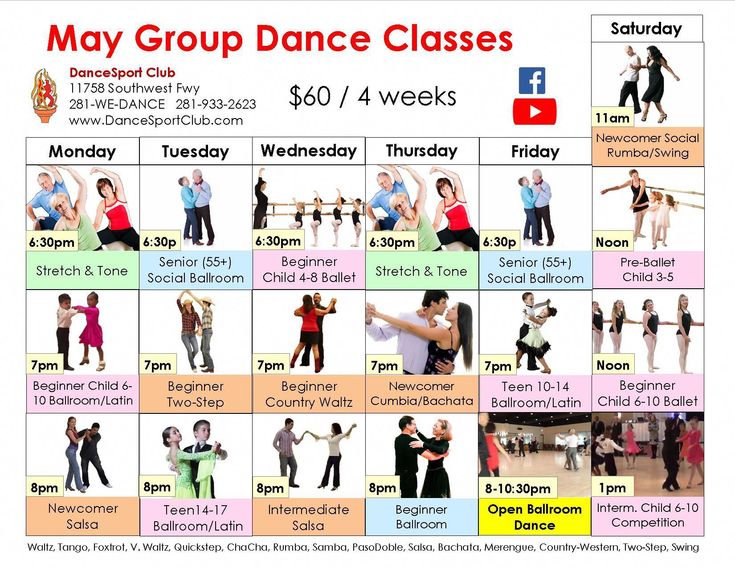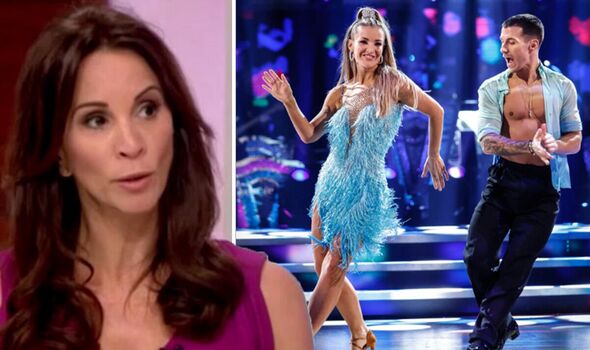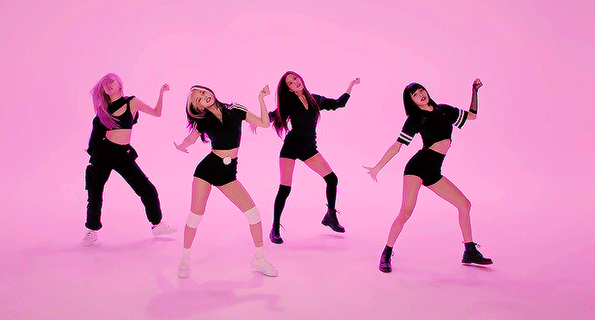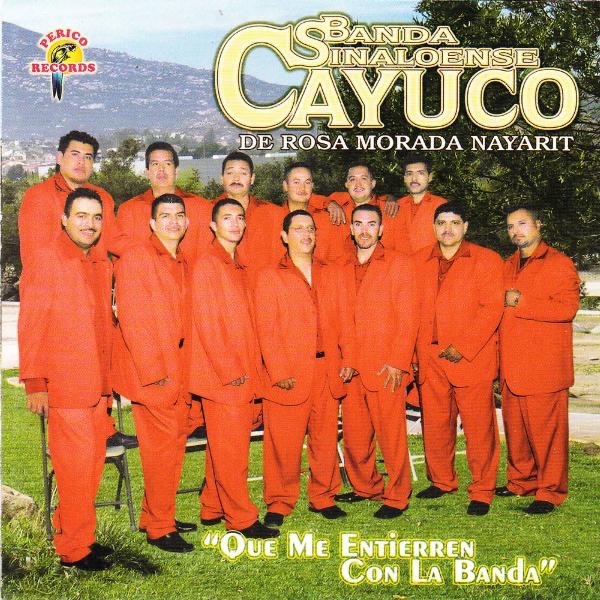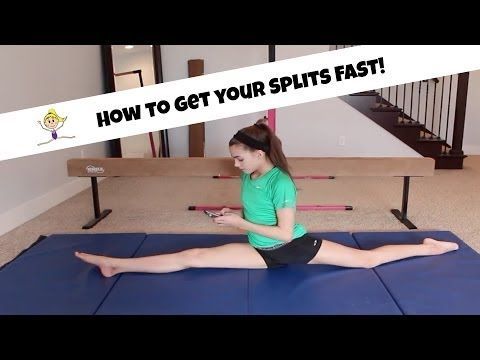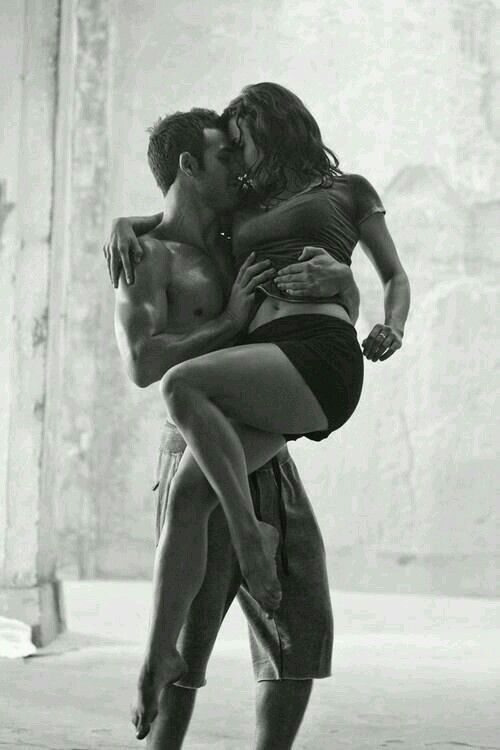How to two step dance for beginners
How To Do The Two Step
Video Transcript:
Alright guys, the next move we’re about to jump into is another basic hip hop move. It’s called the Two Step. Alright and once you get this move down, you’ll be able to use it with any style of music that comes on in any situation. So take a look at t first and then we’ll break it down step by step for you. Six, five, six, seven, eight. And five, six, five, six, seven, eight. Alright so let’s break it down step by step. Now the name is just how is sounds, it’s Two Steps.
So you’re going to start with your feet together and then you’re going to step out one with this foot. And then you’re going to step back in two with the other foot. Alright and different than a Step Touch, you’re not going to touch, you’re going to actually step it together. Stepping back out again, step, together, step, together, step, together and step, together. Alright. Now we’ve got the step down, we’re going to add the bounce into this.
So what I want you guys to do is start from a bent knee and every time you step you’re going to rock up, down, up, down, up, down, up and bounce it, up, up, and up, good. Now all I’m doing here is I’m just bending my torso forward, bending my knees slightly and bringing it up straight. Coming from down low to bouncing up. Alright so let’s try that bounce and we step side to side. Starting with your feet together, nice and slow, five, six, seven, eight and one, two, three, four, five, six, seven, again, and one, two, three, four, five, six, one more time, eight and one, two, three, four, five, six, seven and eight, good. Now what you do with your hands.
There’s a couple of different things you can do with your hands with this move. Anything that feels comfortable for you guys to do is fine. I’m going to give you a couple different things to try it out. Number one, we’re going to have our hands opening and closing. Open and close. Now when you close them, you’re hands are going to cross but it doesn’t matter which hand you put on top. It’s up to you. Open, close, open, close, open, close, open and close. So let’s give that a try with the same two steps using that bounce up as we step. Five, six, seven, eight, we go open, close, open, close, open, close, open and close, keep it up. Open, close, open, close, just like that, one more time through, and open, close, open, close, open, close, open, close. Nice job guys.
Open and close. Now when you close them, you’re hands are going to cross but it doesn’t matter which hand you put on top. It’s up to you. Open, close, open, close, open, close, open and close. So let’s give that a try with the same two steps using that bounce up as we step. Five, six, seven, eight, we go open, close, open, close, open, close, open and close, keep it up. Open, close, open, close, just like that, one more time through, and open, close, open, close, open, close, open, close. Nice job guys.
So a couple of things to remember before we try it with music. Just remember your body position, you’re going to be bent over slightly and then you’re going to be rocking up with your body. So not down, you want to start from the low position and rock up. And remember that basic step, just stepping from the side together, side, together. Alright so let’s give it a shot with music, just have some fun with it, groove it out to the song, you hear the beat it goes one, two, three, four, five, six, seven, eight, so you’ll step together, step together, step together.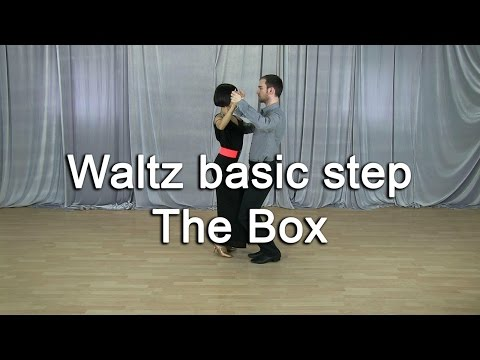 Just like that. Let’s give it a shot. Five, six, seven, eight and step. Good, keeping that bounce going with your body, nice guys, keep it up. Good, you got this basic in and out in a motion, keep that step going, try something different with your hands now, burry it up, hey, nice, you see what your mouth is doing, you can try that as well, Kyle and KC is doing the same thing, just give it a shot, make it your own, that’s the biggest thing. You can have your own personal style for you. Good, a couple more times, keep it going, and five, six, five, six, seven, eight.
Just like that. Let’s give it a shot. Five, six, seven, eight and step. Good, keeping that bounce going with your body, nice guys, keep it up. Good, you got this basic in and out in a motion, keep that step going, try something different with your hands now, burry it up, hey, nice, you see what your mouth is doing, you can try that as well, Kyle and KC is doing the same thing, just give it a shot, make it your own, that’s the biggest thing. You can have your own personal style for you. Good, a couple more times, keep it going, and five, six, five, six, seven, eight.
Back to hip hop dance moves
Learning the Basic Country Two-Step Dance – Country Dancing Tonight
I started country dancing about 3 years ago and was able to learn how to do the basic Two-Step country dance after a few private lessons. Looking back I realized it wasn’t as hard as I thought and since then have shown many people the basics to get them going and remove some of the mystery about it.
If you are going out for the evening to a country bar to do some dancing, there will most likely be lots of line dancing interspersed with couples partner dancing. Far and away the most popular partner dancing in the United States is the two-step. Drawing from what I’ve learned, this post will give you the basics to prepare you to be ready when you venture out to your local country bar or dance club.
Far and away the most popular partner dancing in the United States is the two-step. Drawing from what I’ve learned, this post will give you the basics to prepare you to be ready when you venture out to your local country bar or dance club.
Basic Positions for the Two-Step
In country two-step there is a leader and follower.
Leader: facing your partner, place your right hand under your follower’s left arm and on their shoulder blade.
Follower: facing your partner, place your left hand on your leader’s shoulder seam.
Both: Join your free hands on the other side and hold up and out at about shoulder height.
Notes:
1. After creating this closed position, the leader should position their feet to the left slightly so your toes aren’t pointing directly at each other, but offset slightly.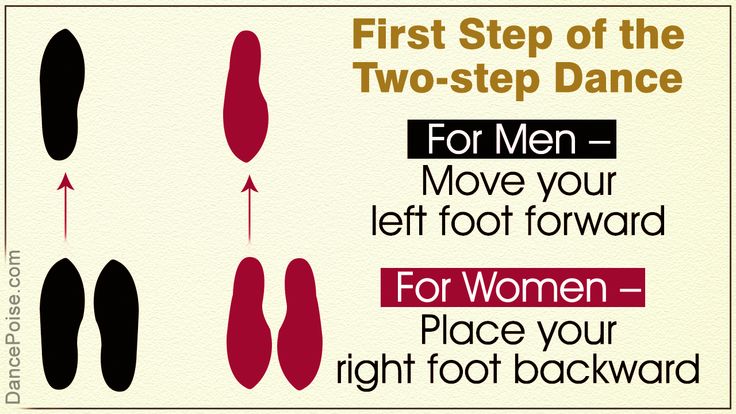 This way you’re less likely to bang your feet together while dancing.
This way you’re less likely to bang your feet together while dancing.
2. It’s important for the follower to lean back slightly into their leader’s right hand and also to put a little pressure with both their left hand (on the leader’s shoulder seam) and with their right clasped hand.
The idea is to keep a fixed amount of space between each other and with this pressure, the lead can push and pull their partner easily. This is known as a good “dance-frame.”
Understanding the Basic Steps for the Two-Step
Two-step dancing consists of two “quick” steps and then two “slow” steps. Knowing when to do these steps is about finding the bass beat of the music being danced to. To get comfortable finding this beat listen to your favorite country songs with this intent. You’ll notice a main beat that you naturally can tap your hand or foot to. In music there is also the “&” beat in-between each basic beat. 1-&-2-&-3-&-4. The Quicksteps are quick because the second one happens on one of these “&” beats. Then you pause or stop for the next “&” and step on the 2nd main beat. This stepping on the “&” beat sometimes and skipping to step on the main beat creates the quick-quick, slow-slow that country two-step is known for.
Then you pause or stop for the next “&” and step on the 2nd main beat. This stepping on the “&” beat sometimes and skipping to step on the main beat creates the quick-quick, slow-slow that country two-step is known for.
For me, as a lead this was the hardest and most intimidating part to getting into country Two-Step. I would ask a lady to dance we would go out onto the floor, assume the correct dance frame and then with other dancers already going I would freeze! I couldn’t hear the beat! I couldn’t start! Honestly, there was no immediate fix to this. It just took some time getting used to hearing and feeling that beat almost subconsciously and naturally so that now I can begin right away.
Tip: I did learn to listen for that beat even before asking someone to dance! This way I was almost already dancing before we started!
Beginning the Two-Step Dance
So, as the lead, there is no absolute beat to start on (like there is with line dancing).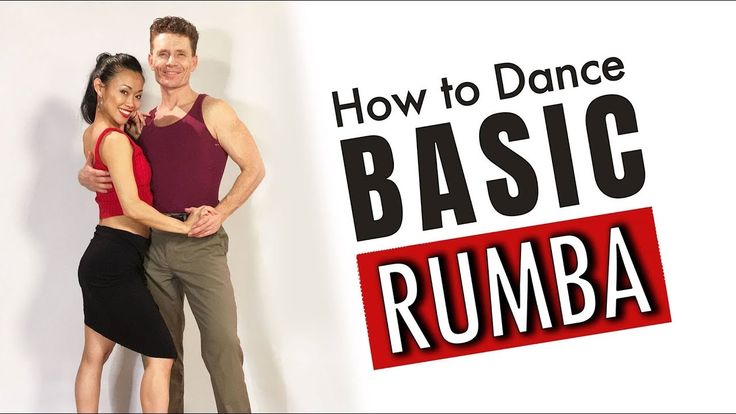 You just pick a beat and begin. As the leader, you do signal your partner that you are beginning by leaning in and pushing.
You just pick a beat and begin. As the leader, you do signal your partner that you are beginning by leaning in and pushing.
The lead begins with their left foot and consequently, the follower steps backward with their right foot.
Then the 2nd (quick) step is taken by your right foot and the follower steps back with their left.
Then you pause for the “&” and step on the main beat, with your left again, followed by a 2nd “slow” step on your right after skipping another “&” beat.
The diagram above illustrates this.
Line of Dance for Two-Step and Partner Dancing
When you go to any country bar to see partner dancing or any ballroom for that matter you will notice that the direction of traffic on the dance floor is always moving counter-clockwise. This is a big part of dance floor etiquette and is very important!
Notes:
Along with the counter-clockwise line of dance, generally it is understood that the outer lanes are going to be used by the more experienced dancers and (unlike a freeway) is the “fast-lane.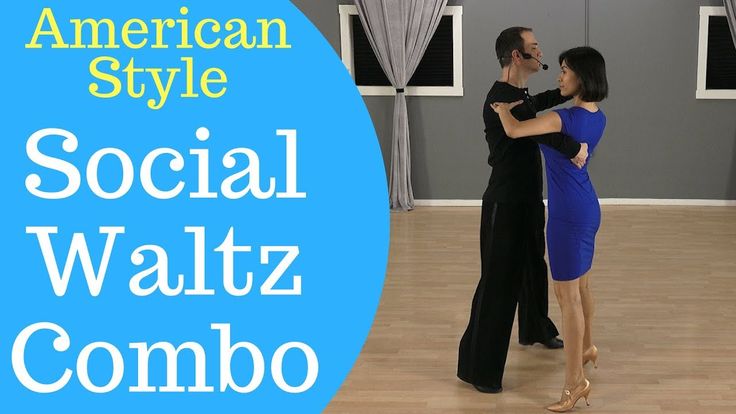 ” The inside lanes of the dance floor are meant for the slower or beginner dancers. And the more toward the middle of the floor the more it is free of traffic. Occasionally there is a really great couple that wants to do some fancy tricks right in the middle open area—so just keep your head up and watch out! It is also pretty common for country bars to allow for line dancing to a given song to happen in the middle while the Two-Step dancers go around them.The Two-Step is known as a “Progressive” or “Traveling” dance and is always danced in a counter-clockwise direction around any dance floor. This graphic illustrates this as well as where to dance as a beginner dancer (inside lane) or more advanced dancer (outside lane).
” The inside lanes of the dance floor are meant for the slower or beginner dancers. And the more toward the middle of the floor the more it is free of traffic. Occasionally there is a really great couple that wants to do some fancy tricks right in the middle open area—so just keep your head up and watch out! It is also pretty common for country bars to allow for line dancing to a given song to happen in the middle while the Two-Step dancers go around them.The Two-Step is known as a “Progressive” or “Traveling” dance and is always danced in a counter-clockwise direction around any dance floor. This graphic illustrates this as well as where to dance as a beginner dancer (inside lane) or more advanced dancer (outside lane).
Two-Step Dancing Leader & Follower Roles
Leader: As a leader, it is your job on the dance floor to watch and steer your partner safely around the dance floor. After getting a good grasp on the basic two-step, a good next level is to turn your partner and lead backward. However, this doesn’t switch the responsibly to the follower to watch out. The leader now must look over their shoulder and see the traffic and continue to steer the two of you safely around the dance floor.
However, this doesn’t switch the responsibly to the follower to watch out. The leader now must look over their shoulder and see the traffic and continue to steer the two of you safely around the dance floor.
But of course, if the follower sees a collision about to happen they can try to give a heads up! But its really not their job. The leader is to be aware of the space and try to see all the dancers around.
Follower: As the follower, it is important to help maintain that pressure between you and your leader. This is how you will know what they’re doing. If you are getting your feet stepped on by your lead you may be collapsing in and not keeping that pressure.
Different Styles of Two-Step Dancing
While the timing for the Two-Step is agreed on universally, there are some differing thoughts about style. This observation of style has to do with timing and is really a discussion for the leader. The main one I’ve heard is how big your steps should be and if your speed is constant or variant. It stands to reason that maybe for a “quick” step you can’t step as far, but for a “slow” step you can take a bigger longer step. But some would say, no, just take longer to make the step! So, all steps are the same distance. I’ve also heard when you do the quick step it should be as if someone “pushes you from behind” hence you’re speeding up at that moment, to then slow down at the “slow-slow.” I don’t think it matters much! The main thing is that as the leader, whatever style feels right for you, you are a good lead and your follow can feel it and pick it up.
It stands to reason that maybe for a “quick” step you can’t step as far, but for a “slow” step you can take a bigger longer step. But some would say, no, just take longer to make the step! So, all steps are the same distance. I’ve also heard when you do the quick step it should be as if someone “pushes you from behind” hence you’re speeding up at that moment, to then slow down at the “slow-slow.” I don’t think it matters much! The main thing is that as the leader, whatever style feels right for you, you are a good lead and your follow can feel it and pick it up.
Two-Step Dance Routines
The Basic dance frame “closed” position, the steps, timing, how to start and understanding the leader and follower roles is all you need to get out on the dance floor and begin! At this point, you are ready to go out dancing and move around the dance floor – in a counter-clockwise direction!
This all provides the foundation for Two-Step and can be built upon throughout years of dancing enjoyment. The following are a few added dance moves and routines to add to your growing repertoire.
The following are a few added dance moves and routines to add to your growing repertoire.
180º Turn – This is a simple turn of the both of you initiated by the lead. The turn is accomplished by the lead using the first slow to move his partner to the right out of the “track” and then completing the full turn of both partners on the second slow. Then the next quick-quick is the lead walking backward, pulling the follower who is now walking forward.
Outside Turn – Possibly more common than turning around might be just turning or spinning the follower. This is accomplished by a small “prep” or signal to the follower with the left hand and turning them around by pulling their hand away from you so they turn clockwise. They will follow their right shoulder. As they come around the leader will reposition their right hand back under the shoulder blade.
Sweetheart Position – This not necessarily a dance move, but another way to progress around the dance floor beside the “closed position.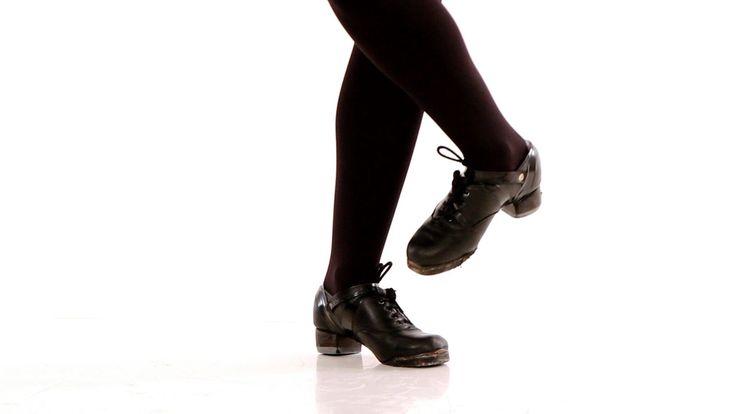 ” When in “closed position” the leader just pulls the follower in for a 1/2 inside turn switching hands. Both partners look forward, both holding right hands in front and left hands held above the follower’s shoulder. The Sweetheart Position gives the follower a nice break from always traveling backward.
” When in “closed position” the leader just pulls the follower in for a 1/2 inside turn switching hands. Both partners look forward, both holding right hands in front and left hands held above the follower’s shoulder. The Sweetheart Position gives the follower a nice break from always traveling backward.
Extra: Once you have this down, try moving to it while the leader is traveling backwards! This forces the lead to be the one turning to walk forward.
Two-Step Dancing Tutorials
This post obviously isn’t intended to turn you into a world-class Two-Stepper overnight! There are many other intermediate and after that advanced routines or patterns to learn! The ones explained above will be a great start and allow you to blend in pretty well with a typical night of Two-Stepping at your local country bar. Below are some great video tutorials showing some of the basics covered above. These videos also add additional tips and will take you farther.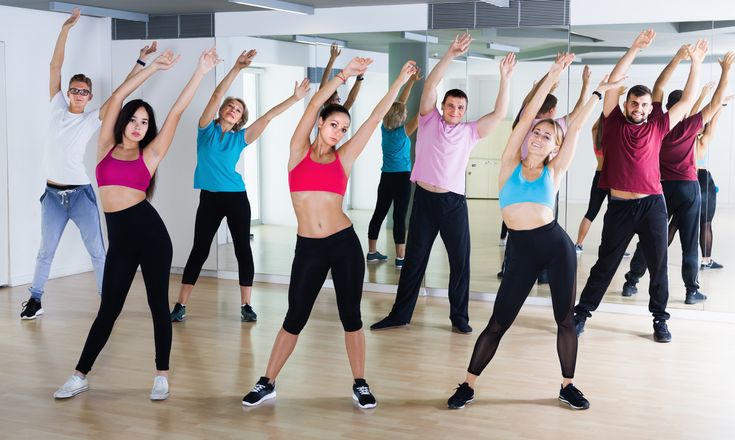 Enjoy!
Enjoy!
https://youtu.be/xoscqzFdwB0Video can’t be loaded because JavaScript is disabled: How to Do the 2-Step | Line Dancing (https://youtu.be/xoscqzFdwB0)
To begin with, this brief tutorial from Robert Royston, a 5-time country dance world champion goes over the basics!https://youtu.be/2NPdOQyqCkcVideo can’t be loaded because JavaScript is disabled: HOW TO DANCE TWO STEP – Country Two Step Dancing For Dummies (https://youtu.be/2NPdOQyqCkc)
In this tutorial Anthony and Rose of Country Dance X seek to settle the debate of how to dance the Two-Step once and for all and take a look cause they are legit dance pros!https://youtu.be/4-2MHaNny8gVideo can’t be loaded because JavaScript is disabled: Beginner Country Two Step Dance Tutorial | Basic Two Step Patterns (https://youtu.be/4-2MHaNny8g)
Lastly, here is a more lengthy and equally reliable tutorial from another equally qualified couple going through several patterns for the Two-Step.How to learn to dance shuffle - Lifehacker
December 15, 2019 Likbez Sports and fitness
Master the basic moves, then improvise and have fun.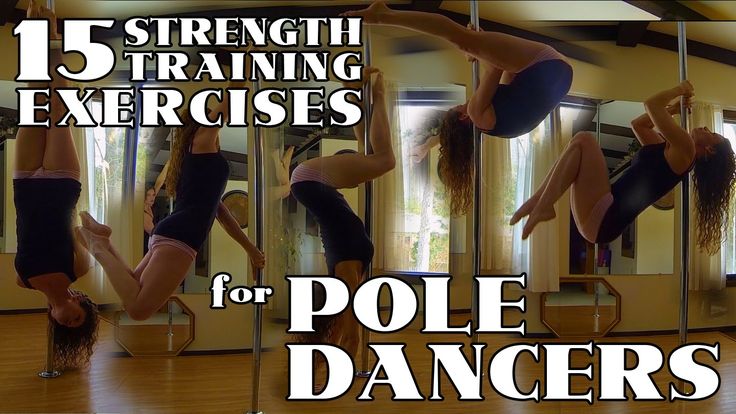
Iya Zorina
Author of Lifehacker, athlete, CCM
This dance style includes a lot of freedom and improvisation. That is why he is so good. You can master the basic movements in a couple of hours, and then endlessly complicate them and combine them with each other, create your own combinations and spy on others. nine0003
Dance in sneakers, socks or barefoot, in any outfit, anywhere.
Master the basic movements of the shuffle
In this style, you do all the basic movements with your feet, the hands most often move freely - according to the heart.
Running man
This is the most basic and essential shuffle movement. You can do it in three different ways.
Full foot
The movement begins by bending your knee and lifting one leg. Next, you need to simultaneously put both legs - supporting and raised - at a distance of one step from each other. nine0003
nine0003
The raised leg is placed forward on a full foot, the standing one behind slips back on the ball of the foot and remains on it - the heel is not placed on the floor. The weight is evenly distributed between the two legs.
After that, it remains to return to the starting position. To do this, the front leg slides back, and at the same time, the back leg is pulled up. You find yourself in the starting position and repeat the cycle. The movement itself is soft and springy: do not stick into the floor, keep your legs relaxed. nine0003
Heel
This is a lighter and faster running man look that may be needed for some combinations. Here you put your foot not on the whole foot, but on the heel. At the same time, the one standing behind remains on the toe.
On pads
In this variation, the foot is placed forward on the pad. At the same time, the one standing behind also remains on the ball of the foot, and the body leans slightly back.
T‑step
In this movement, one foot constantly makes a “herringbone” - turns the heel in and out - and the second touches the floor and immediately rises back. nine0003
nine0003
When the heel of the skating leg turns inward, the toe of the other leg touches the floor; when outward, the other leg rises, turning the knee inward.
It turns out two positions: closed - when the legs are wrapped with the knees inward, and one leg is raised, and open - when the legs are turned out with the knees outward, and the toe touches the floor. Practice doing the T-step in both directions: slowly at first, then with acceleration.
Rocking
You jump on one foot while the other touches the floor in different places: on the side of the supporting leg, across, behind - anywhere you want. You can put your foot on the toe or on the heel - the latter is called a kick. The supporting leg can simply rise low or perform a T-step - move the heel out and in. nine0003
Charleston
To begin, you turn your knees and toes inward and lift one leg. Then turn your toes and knees outward, and put your raised leg forward crosswise. Repeat the same with the other leg.
All movement occurs on the balls of the feet, the heels do not fall to the floor. You can move both forward and backward.
Diamond
First, with a jump, you put your feet crosswise with your toes out, then you also spread your legs to the sides with a jump. nine0003
Slides
One leg is straight, stands on the whole foot, the other is with a bent knee on the pad. Leaning on the pad, you slip the foot of a straight leg back, as if wiping the sole on the floor.
Immediately after the slip, you turn around. In the turn, the straight leg bends and goes to the pad, and the one that was on the pad, on the contrary, turns on the heel. After that, it remains only to change legs and move in the same way in the other direction.
Scissors
From the starting position - standing with a raised leg, as in Running man - you turn your hips to the side with a jump and put your legs crosswise.
The front foot is on the heel, the back foot is on the ball.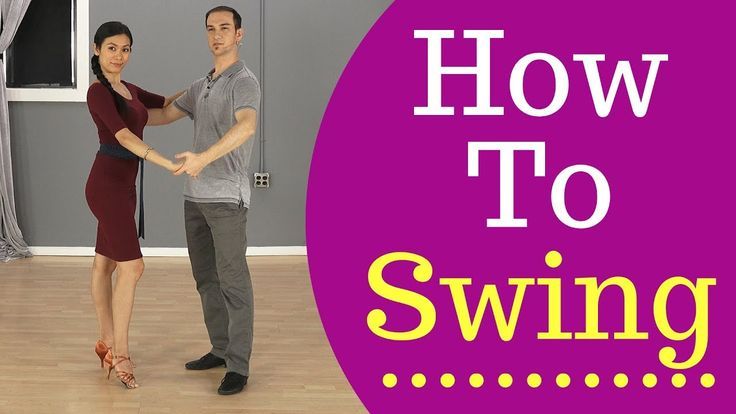 Then you jump back to the starting position and do the same on the other side.
Then you jump back to the starting position and do the same on the other side.
Sidekick
From the starting position, you turn your hips to the side with a jump and spread your legs a step apart from each other. The standing foot in front is placed on the heel, the standing one behind remains on the pillow. Then, with a jump, you collect your legs and do the same on the other side. nine0003
Try other variations of the basic shuffle movements
You can perform basic movements in different directions: forward and backward, turning around. This will give you more freedom to improvise.
Variations Running man
Do several times in place and then turn around. You can also try walking this way to the side. Each time the leg will need to be placed slightly crossed in order to slowly move to the side.
Variations T‑step
You can lower your foot on the toe, on the whole foot, touch the floor to the side of the supporting leg or forward and behind it.
You can also keep the other leg on the floor at all - leave it on the toe and turn the knee in and out.
Variations Diamond
Here one more element is added to the movement – the heel strike. In the starting position, you wrap the toes of the feet and knees inward, and then jump on the heels, turning the socks to the sides.
From this position, without jumping, you turn your toes and knees inward, cross your legs with a jump, turning your feet with your toes outward, and then return to the starting position. nine0003
Charleston Variations
After three turns of the Charleston, turn both toes in one direction and then in the other. At the end, you can turn the knee to the side.
Combine familiar shuffle moves
While you lack the skills to move freely and come up with something of your own, learn a few combinations. They contain interesting movements that will replenish your dance vocabulary.
Combination 1
This is a simple combination of two basic movements - Running man and T-step.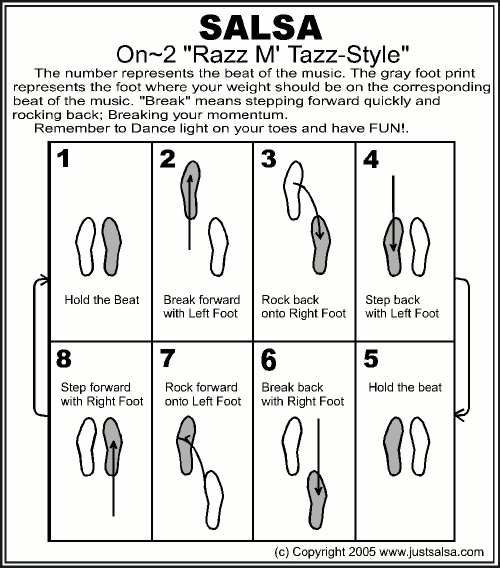 First take five Running man steps, then four T-steps to the side and repeat the same in the opposite direction. nine0057
First take five Running man steps, then four T-steps to the side and repeat the same in the opposite direction. nine0057
Combination 2
Another combination of two basic movements. Here you do three Running mans, then one T‑step with a back foot touch, and two front heel touch kicks. The same on the other side.
Combination 3
There are no standard steps here, but there are already familiar Sidekick and transition from heels to toes.
Learn more difficult combinations
We will add some videos with good combinations.
1. Cool video for beginners: movements are repeated in slow motion to make it easier to dance to the music. nine0003
2. And here the combination is analyzed step by step in slow motion, dividing it into three parts. Very comfortably. Look for more on this channel, there are several such analyzes.
3. No slowdown here, just a great combination. But you already know almost all the movements, so you can figure it out. If something is not clear, watch the video at a speed of 0.25.
Pick the music and improvise
You probably have a favorite song to shuffle to. Include them and start with basic movements: just do the Running man and periodically add different elements when you want. Move in different directions, relax and have fun. nine0003
If you don't have favorite tracks, try our selection.
I must say that the shuffle is an amazing cardio workout. In just a couple of tracks, you will be out of breath and sweat, like after a run, but you will feel absolutely happy!
What's more, if you have to force yourself to keep going while running, shuffle requires you to have the willpower to stop and not dance. As a bonus - a short video from a beginner after a couple of hours of practice. nine0003
As a bonus - a short video from a beginner after a couple of hours of practice. nine0003
Shuffle is cool!
Read also 🕺💃🤸♀️
- Dancing as a sport: choosing the right direction
- Dance and movement therapy: how to know and change yourself through movement
- How to learn to dance: video lessons for those who are not afraid to try
- How to learn street dancing without leaving home
- Zumba is a fun way to lose weight for those who love dancing
*Activity of Meta Platforms Inc. and its social networks Facebook and Instagram are prohibited in the territory of the Russian Federation.
Dance workouts for weight loss: TOP 10 best
Dancing is one of the most effective ways to lose weight, which helps to burn calories, strengthen muscles, tone the body. In addition, dancing gives a positive charge of emotions, cheers up, increases self-esteem and self-confidence. While dancing, you can easily maintain training discipline and motivation.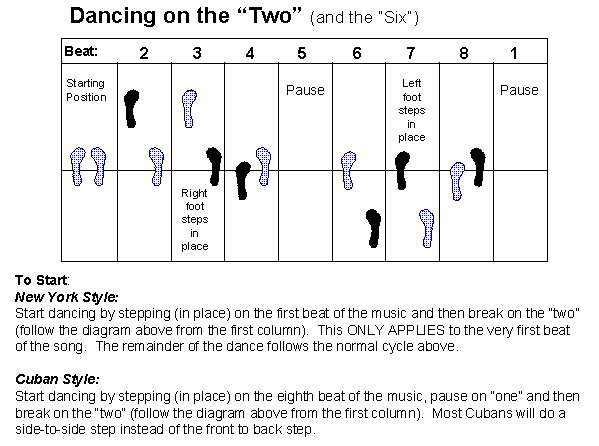 After all, this is not just a routine sport, it is a pleasure! nine0003
After all, this is not just a routine sport, it is a pleasure! nine0003
Absolutely all types of dance promote weight loss and help to lose weight if they are practiced regularly: be it zumba, belly dancing, dance aerobics, modern dance, twerk or pole dancing. If you love to dance and want to lose weight, then you are in luck. Dancing is an ideal strategy for losing weight and improving your figure.
Read also about other types of training:
- Pilates: effectiveness benefits + Pilates exercises
- Body-ballet: effectiveness for weight loss + exercises and videos. nine0155
- Functional training: features and exercises
- CrossFit: benefits and harms + training scheme
Dance training: how to practice
Before moving on to an overview of the most popular dance styles, let's first note the main benefits of regular dance classes. What are the benefits and features of dance training?
The Benefits of Dance Training
- Dancing is an aerobic exercise that raises your heart rate and burns calories to help you lose weight.
 Depending on the intensity of the class, half an hour of dancing can burn from 200 to 400 calories. This daily calorie loss is sufficient for gradual weight loss, especially when combined with a balanced diet. nine0155
Depending on the intensity of the class, half an hour of dancing can burn from 200 to 400 calories. This daily calorie loss is sufficient for gradual weight loss, especially when combined with a balanced diet. nine0155 - Dancing strengthens the entire muscular system of your body. Every time you practice dance steps and movements, you are engaging a large number of muscle groups at the same time. Repetitive repetition of movements in a dance class or in training is an excellent factor for muscle development. And a strong muscular body is not only aesthetically beautiful, but also useful in terms of fat burning (muscle tissue burns several times more calories than fat).
- Dance training is a fun creative activity. If you love dancing, then you will not get tired of the training routine, as is often the case after repeated repetitions of the same strength or cardio exercises. Thanks to dancing, you will be able to maintain sports motivation for a long time. nine0155
- Dancing helps fight stress.
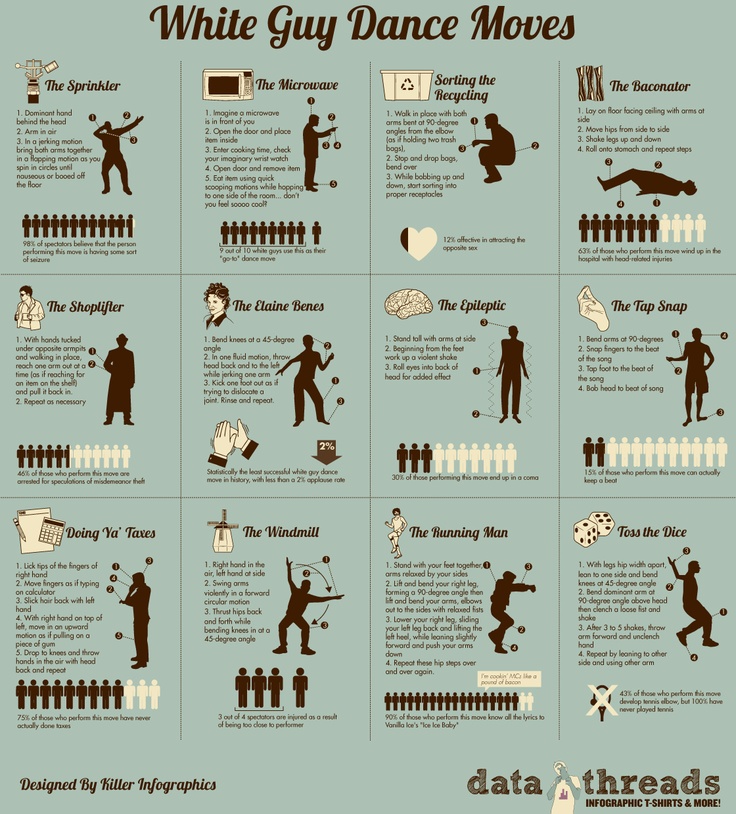 Firstly, rhythmic movements to pleasant music a priori cheer you up, so after the dance class you will definitely leave in a great mood. Secondly, like any physical activity, dancing contributes to the production of endorphins - the hormones of pleasure and happiness.
Firstly, rhythmic movements to pleasant music a priori cheer you up, so after the dance class you will definitely leave in a great mood. Secondly, like any physical activity, dancing contributes to the production of endorphins - the hormones of pleasure and happiness. - Dancing helps to increase self-esteem. On the one hand, you will be proud of your success and development in the dance field. On the other hand, good control of one's own body allows one to find harmony in the soul, to feel satisfaction and comfort. nine0155
- Dancing improves posture. It's no secret that a straight posture is not only one of the important parameters of a beautiful appearance, but also the health of the spine. Regular dance training will relieve you of back and lower back pain, as well as minimize the harm from a sedentary lifestyle.
- Dancing develops grace, plasticity and coordination. Step by step you will learn new choreography, synchronize movements with music, work on softness and smoothness of lines.
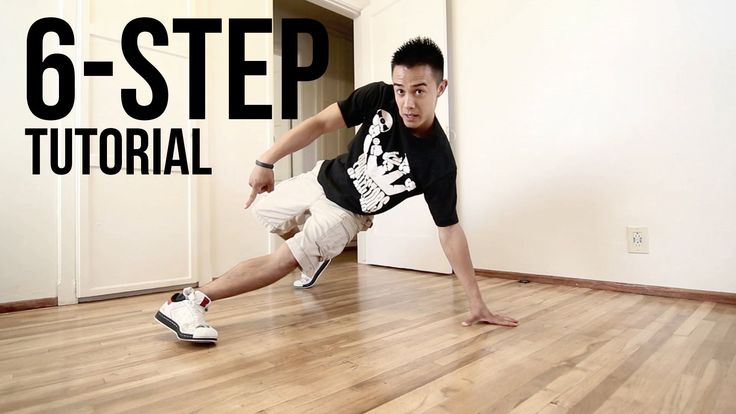 This is an amazing way to liberate the body and forget about internal barriers. nine0155
This is an amazing way to liberate the body and forget about internal barriers. nine0155
Of course, the benefits of dancing largely depend on the choice of a specific dance direction. For example, there are certain types that are especially effective for losing weight (Zumba, Latin dances, dance aerobics), for developing muscles and improving posture (ballet training, modern), for strengthening leg muscles (step aerobics, Irish step), etc.
10 Basic Rules for Dance Classes
Here are some general rules regarding dance training and its effectiveness for weight loss. If you have already chosen a specific type of dance, we recommend that you also read additional information about the features of this direction or consult with your trainer (choreographer). nine0003
- Be sure to do a short warm-up before your dance workout to prepare your muscles, joints and ligaments for class.
- Don't forget the comfortable practice shoes that are right for your dance class.
 If dancing involves jumping and impact loads, then train in sports shoes. Check out our TOP 20 women's fitness shoes.
If dancing involves jumping and impact loads, then train in sports shoes. Check out our TOP 20 women's fitness shoes. - Do not eat at least one hour before class to ensure your comfort. If you are planning a full meal before a dance workout, then at least 1.5 hours must pass before class for normal absorption of food. nine0155
- To maintain muscle 30-40 minutes after training, you need to eat a small portion of protein with carbohydrates (for example, cottage cheese with apple, whey protein in milk, vegetables with chicken breast). Another option, which is considered more preferable for losing weight, is not to eat for two hours after a workout. But such a long period without food is not always comfortable, so focus on your body.
- Drink a glass of water 20 minutes before your dance workout. Drink in small sips every 10 minutes of class. After training, drink another glass of water to restore water balance. nine0155
- If you want to lose weight, then you should try to adhere to the principles of proper nutrition throughout the day, following the simple rule of energy balance: consume fewer calories than the body burns.
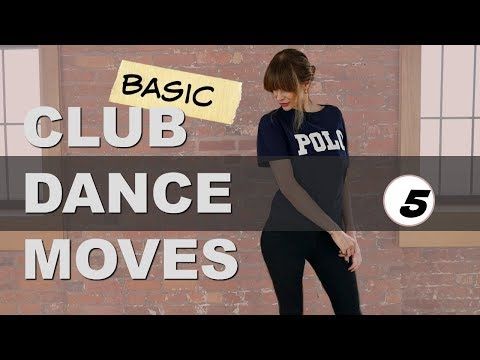
- You can do dance training at any time convenient for you, both in the morning and in the evening. The only recommendation, if you practice intense dance loads in the afternoon, it is better to perform them at least 3 hours before bedtime, so as not to provoke insomnia. nine0155
- Despite the fact that dance training is a rather gentle type of exercise, it is far from suitable for everyone. For example, chronic diseases, problems with the spine and joints, diseases of the cardiovascular system, hypertension, pregnancy can become an obstacle to exercise. Be sure to consult your doctor if you have any doubts about contraindications to exercise.
- Dance training can also be done at home. However, if you want to not only lose weight, but also really learn how to dance, then it is better to contact a professional studio for group or private training. nine0155
- If you are in doubt about which dance direction to choose, be sure to go to a trial lesson. Sometimes the impressions from watching a dance on the screen and directly from participating in it are completely opposite.

Popular types of dance workouts
There are so many dance workouts for weight loss, so you can choose the direction that suits you. We have selected 10 top dance workouts for weight loss that are popular both in terms of choice of practitioners and in terms of fitness club offers. nine0003
1. Zumba
Zumba is one of the most popular dance styles of recent years. Zumba is a mixture of famous Latin American dances: merengue, samba, reggaeton, cumbia and salsa. In the late 90s, the Colombian dancer Alberto Perez developed this sport and dance direction, which instantly became popular all over the world. Today, Zumba is practiced in almost all countries of the world, and this wild success is very easy to explain.
First, Zumba involves simple movements that even a beginner can repeat. Secondly, training sessions are accompanied by cheerful South American music, which uplifts the mood and gives a positive emotional charge for the whole day. Thirdly, Zumba classes are an effective cardio load that helps burn fat and get rid of excess weight. nine0003
Thirdly, Zumba classes are an effective cardio load that helps burn fat and get rid of excess weight. nine0003
If you want to practice Zumba under the guidance of professional trainers, we recommend you the GallaDance dance club, where you will find comfortable conditions for classes and a high level of service: https://www.galladance.com/directions/grown-up/dance-fitness /zumba/
2. Belly dancing
Belly dancing (oriental dance) combines traditional elements of the Middle East and North Africa, but the popularity of this direction has gone far beyond the boundaries of their places of origin. Probably everyone is familiar with these soft and smooth movements of the stomach and hips, which form perhaps the most attractive dance in the world. Oriental dancing is a great cardio workout option for burning calories and toning your mid-body muscles. nine0003
Why is belly dancing so popular with girls? Firstly, such dance workouts help to work on the most problematic "female" areas: abdomen, waist, buttocks and hips.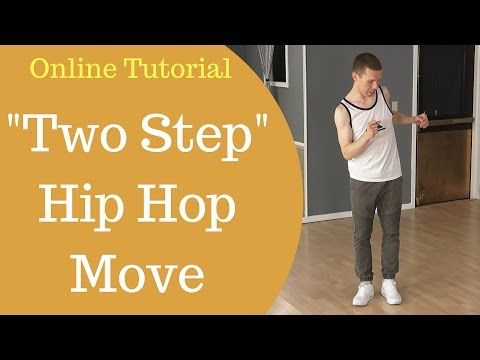 This is especially true for women after childbirth. Secondly, belly dancing develops attractiveness and grace. Thirdly, these are unstressed workouts that do not put stress on the joints.
This is especially true for women after childbirth. Secondly, belly dancing develops attractiveness and grace. Thirdly, these are unstressed workouts that do not put stress on the joints.
3. Ballet training
Another extremely popular direction among dance training is classes based on ballet exercises (body ballet). Such training includes the most popular movements from ballet: demi-plié and grand-plié, forward and backward batmans, various exercises on half-fingers, exercises on the floor. Of course, ballet training is not pure ballet, but an adapted set of exercises for the formation of a beautiful body. nine0003
What are the benefits of body ballet? Firstly, ballet exercises at the barre help to improve the quality of the body and tone the muscles of the legs, abdomen and arms. Secondly, ballet training develops flexibility and grace. Thirdly, you will improve your posture and get rid of stoop. Fourthly, ballet training is easy to do at home, because there are no specific dance sequences here.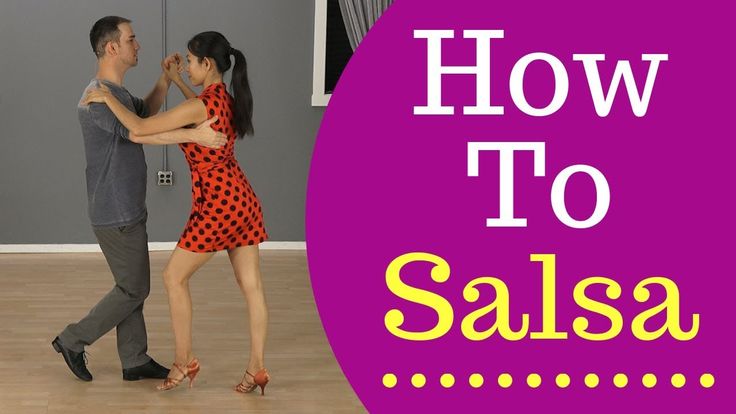
4. Dance aerobics
Aerobics is a classic dance and sports direction. Aerobics was booming at 90s, but even now there are a lot of devoted fans of these workouts. What is its essence? Dance aerobics is a set of simple steps that usually go to the beat and to the beat of the music. Steps are combined into choreographic bundles, while their complexity can be completely different depending on the particular lesson and group.
Why has aerobics been and continues to be so successful? Firstly, this is an ideal option for a cardio load, since a high heart rate in the fat-burning zone is maintained throughout the entire session due to continuous movements. Secondly, for dance aerobics, you do not need to worry about the aesthetics and grace of movements - first of all, this is fitness, not dance. Thirdly, aerobics can also be practiced at home, since you do not need any additional equipment or special skills. nine0003
5. Step aerobics
Step aerobics is another very popular form of dance and sports variety. Step aerobics is loved all over the world, and its demand does not fall, even despite the regular emergence of new fitness areas (unlike, for example, the same aerobics, which has noticeably lost ground). Step aerobics is a set of choreographic movements on a special platform. This is not a dance in its purest form, but the set of chords here is quite difficult and requires multiple repetitions to memorize. nine0003
Step aerobics is loved all over the world, and its demand does not fall, even despite the regular emergence of new fitness areas (unlike, for example, the same aerobics, which has noticeably lost ground). Step aerobics is a set of choreographic movements on a special platform. This is not a dance in its purest form, but the set of chords here is quite difficult and requires multiple repetitions to memorize. nine0003
Why is step aerobics effective for weight loss? Firstly, by constantly stepping onto the platform, you will include the muscles of the buttocks and legs, thereby removing sagging and cellulite. Secondly, the intense pace and climbs to the platform very well provide a fat-burning pace throughout the session. Step aerobics can also be practiced at home, but for this you will need to purchase a step platform.
6. Twerk
If oriental dancing appeals to those who want to tighten their abdominal muscles, then twerk is a dance direction for creating “round buttocks”. And it is also a very sensual and even provocative dance, which is based on fast rotations of the pelvis. Twerk dance is quite young, it appeared in Puerto Rico at the end of 90s and became popular thanks to the performances of such top stars as Beyoncé, Rihanna and Miley Cyrus.
And it is also a very sensual and even provocative dance, which is based on fast rotations of the pelvis. Twerk dance is quite young, it appeared in Puerto Rico at the end of 90s and became popular thanks to the performances of such top stars as Beyoncé, Rihanna and Miley Cyrus.
What are the benefits of twerking for weight loss? Firstly, this is a very fat-burning workout, in which the heart rate rises rapidly and calories are burned rapidly. Secondly, twerk movements help to qualitatively work out the most problematic female parts of the body: hips, buttocks, waist and stomach. Thirdly, such training improves blood circulation in the pelvic area, reducing menstrual cramps and alleviating symptoms associated with menopause. nine0003
7. Latin dance
Group Latin dance classes are also very common in various dance clubs and fitness centers. Latin dances include movements and elements of choreography from such popular styles as salsa, merengue, bachata, rumba, chachacha, reggaeton, samba.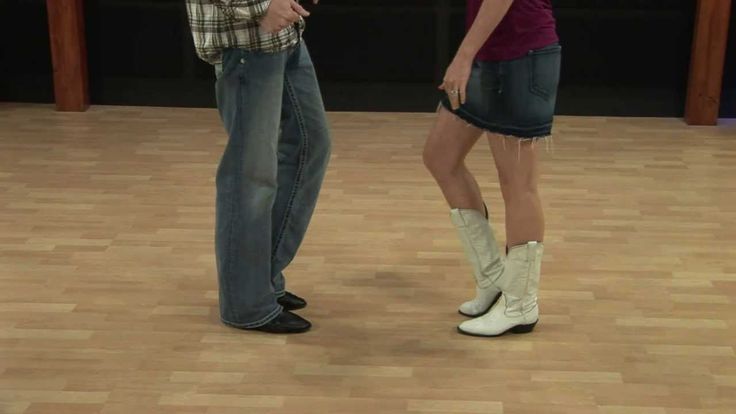 Unlike Zumba, Latin dance classes are usually more authentic and closer to the original dance styles.
Unlike Zumba, Latin dance classes are usually more authentic and closer to the original dance styles.
Among the advantages of Latin dance lessons, it is worth noting the following. Firstly, this is a variety of dance styles, thanks to which you can master the basic movements of the most popular South American dances. Secondly, Latin dances are very incendiary and fun, so you are guaranteed a positive workout. Thirdly, it is highly effective in terms of fat burning, since Latin dances are very energy-intensive. nine0003
8. Irish step
Irish step is a very special dance style that has captivated many people around the world. The peculiarity of the Irish dance or riverdance is clear and quick movements of the legs while maintaining the immobility of the body (like tap dancing). By the way, for riverdance it is not always necessary to purchase special shoes for the characteristic rhythmic sound of boots, since there is a category of Irish dances that is performed in soft shoes.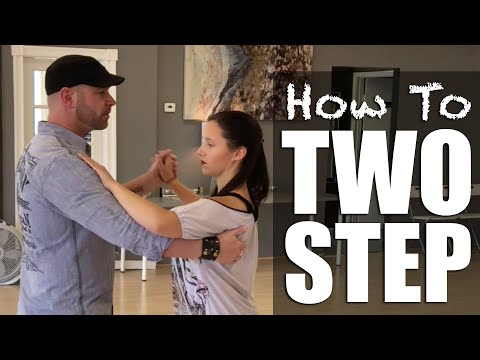 nine0003
nine0003
Why is Irish step useful? Firstly, it develops a great sense of rhythm, because you have to move strictly to the beat of the music. Secondly, riverdance is very useful in terms of developing concentration and attention - you will not only need to remember certain movements, but also perform difficult choreography at a very fast pace. Thirdly, you are provided with an excellent all-round load on the leg muscles. And fourthly, one cannot but agree that such a dance is very unusual and creative. nine0003
9. Pole dancing
If earlier pole dancing was associated only with performances in nightclubs and discos, now this dance direction is increasingly found in fitness halls as a sports class as part of group training. The main instrument of pole dancing is a fixed vertical pole. In order to perform even the simplest exercises with a pole, you need serious muscle strength and coordination, because at the same time as choreographic movements you must support your own body weight.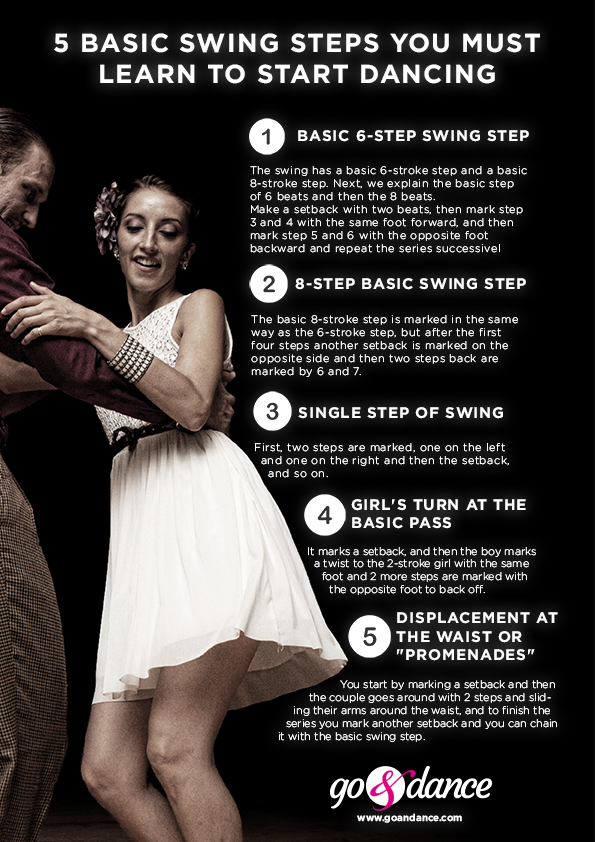 nine0003
nine0003
What are the benefits of pole dancing? Firstly, this is a pumping of the whole body, since such an acrobatic dance requires you to seriously prepare all muscle groups. Secondly, this is work on stretching and flexibility, because pole dancing involves splits and backbends. Thirdly, pole dancing is fantastically beautiful and sensual. This dance is mesmerizing and impressive.
10. Modern dance
Modern dance or modern is one of the most popular directions of dance art today. The movements of modern dance cannot be called structured and clear; rather, they are the prototype of free, fluid and abstract choreography. It is sometimes compared to classical ballet. But if in classical ballet the movement is airy and sublime, then in modern dance the choreography seems to land on the floor. nine0003
Why choose modern for training? Firstly, modern dance classes perfectly develop plasticity, grace, softness of movement, which is important for female attractiveness.